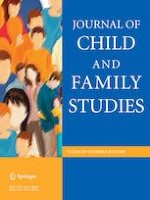16-11-2019 | Original Paper
Parenting and Child Anxiety: The Role of Country of Birth and Acculturation in Indian-born Migrants to Australia Relative to Native-born Australians
Gepubliceerd in: Journal of Child and Family Studies | Uitgave 6/2020
Log in om toegang te krijgenAbstract
Objectives
This study investigated the differences in parental beliefs about anxiety and parenting styles in Indian- and Australian-born mothers in Australia and whether these differentially related to child anxiety depending on maternal background and acculturation.
Methods
51 mother-child dyads from Sydney participated, consisting of Indian- or Australian-born mothers and their 8–12-year-old child. Mothers completed measures of their anxiety, their child’s anxiety, their beliefs about their child’s anxiety and their bi-dimensional acculturation (if Indian), i.e., an assessment of immersion into both Australian and native culture. Children completed a self-report of anxiety and a measure of their mother’s parenting style.
Results
Indian mothers scored significantly higher on anxious rearing and negative beliefs about anxiety than Australian-born mothers. Moderated regression analysis revealed that Country of Birth did not significantly moderate the relationship between parenting and child anxiety, but acculturation did. Amongst mothers reporting low Indian cultural retention, negative beliefs about child anxiety and anxious rearing positively related to child anxiety. These relationships were reversed amongst mothers reporting high Indian cultural retention. Amongst mothers reporting high Australian cultural identification, emotional warmth negatively related to child anxiety; this was reversed for low Australian cultural identification.
Conclusions
Results highlight the importance of considering acculturation, specifically as a bi-dimensional construct, rather than COB when examining anxious behaviours and attitudes in migrants. Findings suggest that cultural adaptation of family treatment should look beyond COB and consider within-group differences in acculturative attitudes and status.
